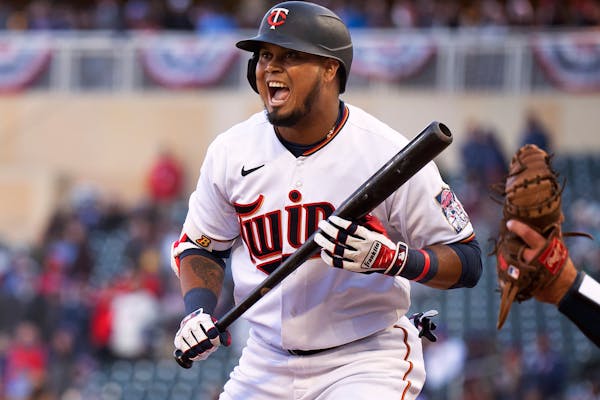 See
more of the story
See
more of the story
The Twins cut Miguel Sano loose this week, ending a relationship of a dozen years. What happened to one of baseball's most celebrated prospects?
He didn't fail because of a lack of talent. The hype surrounding Sano as a youngster was deserved. He should have become a perennial All-Star.
When the Twins entered their years-long slump in the early 2010s, the Star Tribune decided to invest in covering Sano and another top Twins prospect named Byron Buxton. The Twins, historically cautious about promoting prospects, decided in this case to be remarkably cooperative.
I traveled to Buxton's hometown of Baxley, Ga., and his offseason home in Atlanta. I traveled to Cedar Rapids, Iowa, where Buxton was mimicking Mike Trout in the low minors, and spent time with Buxton and Sano in Fort Myers, Fla.
One day when Buxton and Sano were rehabilitating injuries at the Twins' facility in Fort Myers, I asked to go fishing with them.
I envisioned a yacht in the Gulf. I got a pickup parked by a ditch. Sano, his friends and Buxton fished in a "canal" by Daniels Parkway, a busy street near the ballpark.
They were young, personable and wildly talented. Buxton was as fast as anyone in the game and had thrown a 100-mph pitch in high school. Sano was built like former Vikings great John Randle. Former Twin Doug Mientkiewicz, who managed them at Class A Fort Myers, predicted stardom for both, and he said that Sano was more likely to become a team leader because of his audacious competitiveness.
Everywhere I went, scouts, officials from other teams and Twins officials were raving about the two.
Sano put up big numbers throughout the minors, and when the Twins called him to the big leagues in 2015, he immediately became the best and most disciplined hitter in the lineup of a contender. Torii Hunter vowed that Sano would upgrade the entire franchise.
What went wrong?
First, it's important to note that even when striking out at a prodigious rate, Sano was almost always valuable when healthy.
His career on-base-plus-slugging percentage, even after all those ugly slumps, is .808. Max Kepler's is .744, Jorge Polanco's is .779 and Luis Arraez's is .784. Sano had so much power that connecting even a few times a week made him productive.
Why didn't his remarkable talent enable him to have a better Twins career? Hundreds of conversations over the years have led me to these conclusions:
- Immaturity early in his career kept him from the important work of constantly refining his skills.
- After he developed a strong work ethic, injuries interrupted his progress, and the swing he developed — a little too long, with a bit of a hitch — required timing, which would erode when he wasn't playing every day.
- Most important, he failed to master the art of the at-bat.
Twins fans have seen masters at work, including Rod Carew, Tony Oliva. Kirby Puckett, Kent Hrbek, Chuck Knoblauch, Joe Mauer, Justin Morneau, Paul Molitor and now Arraez. They had vastly different styles and approaches, but they all knew how to win the game-within-a-game with the opposing pitcher.
Puckett swung out of the strike zone, but always with a plan on how to get the pitch he wanted. Morneau was the rare hitter who would trick a pitcher into giving him what he wanted. Carew, Oliva, Molitor, Hrbek, Knoblauch, Mauer and Arraez could mash pitches on the outside part of the plate yet were quick enough to turn on inside pitches, and savvy enough to guess a pitcher's intentions.
Sano's swing in recent years wasn't as quick as it was when he was young, so he needed to start his swing a touch early to catch up with a good fastball. That left him vulnerable to breaking pitches and pitches on the outside part of the plate.
Sano wanted to hit long home runs to left field, which exacerbated his weaknesses. Trying to pull inside fastballs meant that every other pitch became unhittable. He hit one home run this summer, in 60 at-bats (with 25 strikeouts), a mostly silent end to his Twins career.
You can't become a slugging star in the major leagues without mastering the art of the at-bat. Sano's approach deteriorated as he matured, a trend that cost him his job with the Twins.







